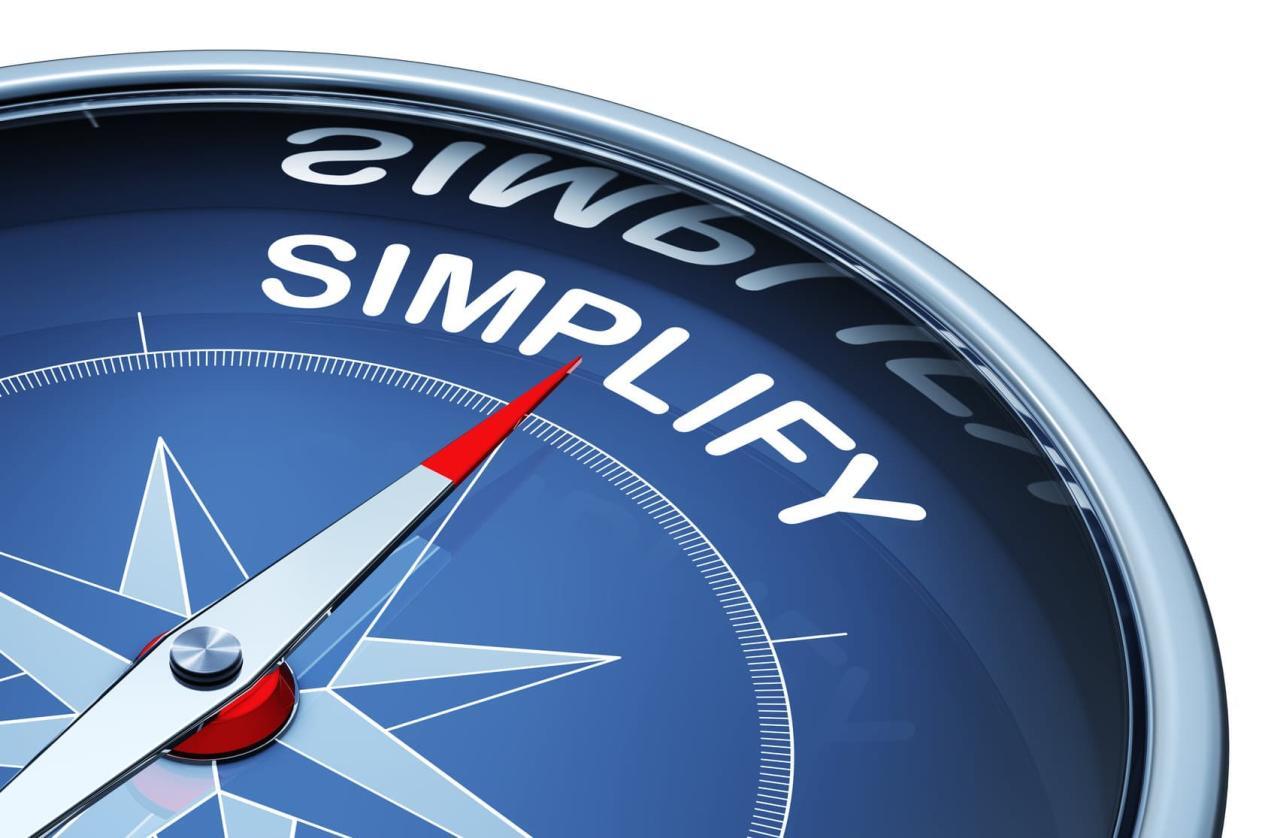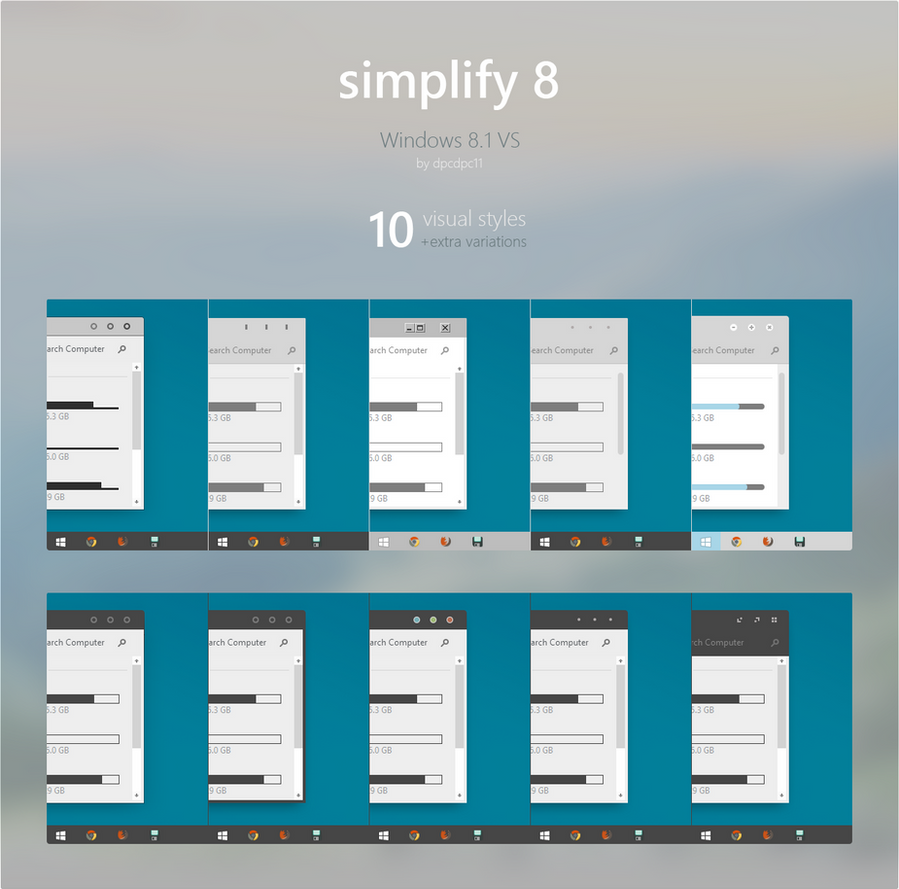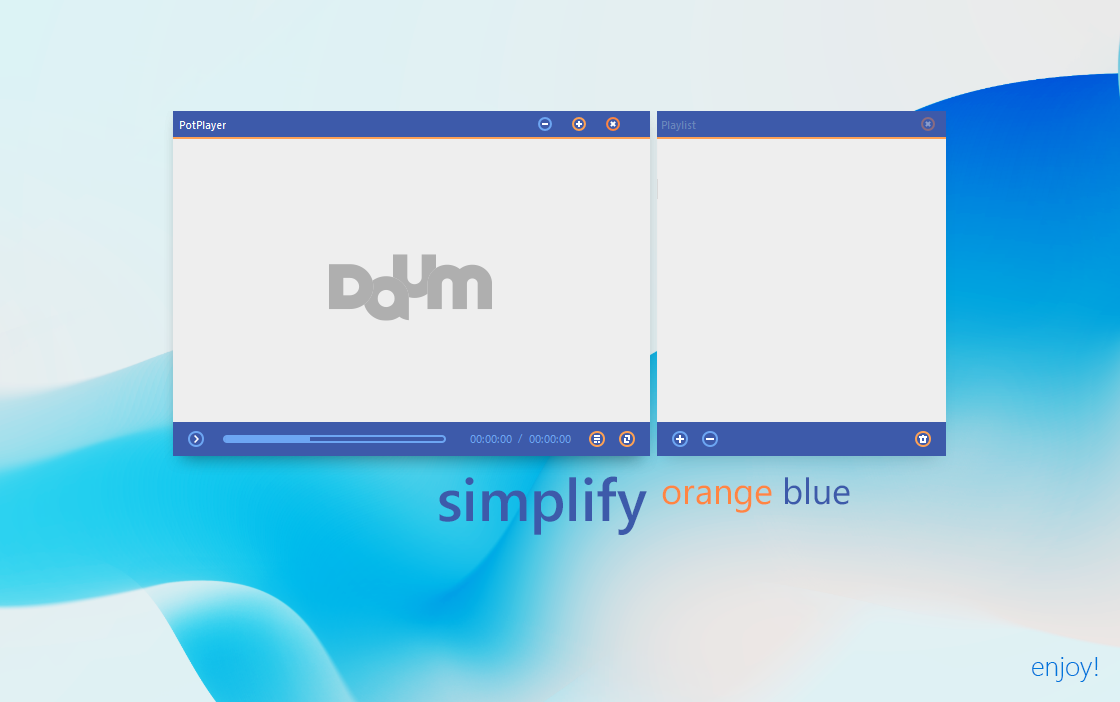Effective communication hinges on clarity and understanding. This guide delves into the art of simplifying your message, ensuring your audience grasps your intended meaning effortlessly. We’ll explore key strategies for crafting clear, concise, and impactful communication, regardless of the context.
From analyzing your audience to mastering visual aids and gathering feedback, this guide provides a structured approach to transforming complex ideas into easily digestible messages. We’ll cover essential elements for constructing simple messages and testing their effectiveness.
Defining Simplicity in Communication

Simplicity in communication is paramount to fostering understanding and engagement. A simple message, in this context, is one that is easily grasped and understood by the intended audience. It avoids unnecessary jargon, convoluted sentence structures, and excessive detail, focusing instead on conveying the core message clearly and concisely. This approach is vital for effective communication in various settings, from business presentations to personal interactions.A simple message achieves clarity by prioritizing essential information.
It employs straightforward language, avoiding ambiguous terms and technicalities unless absolutely necessary. The structure of a simple message is often direct and logical, progressing from a clear introduction to a concise conclusion. Conversely, complex messages often involve convoluted sentence structures, abstract language, and multiple tangents, which can lead to confusion and a loss of the intended meaning.
Characteristics of a Simple Message
A simple message possesses distinct characteristics that facilitate understanding. These characteristics are not mutually exclusive, and a message can exhibit multiple traits of simplicity. Clear and concise language is paramount. A simple message employs direct, straightforward language, avoiding complex vocabulary and idioms unless these are crucial for the intended audience. Logical structure is another key element.
A simple message presents information in a logical order, moving from point to point with clear transitions. Conciseness is equally important. A simple message avoids unnecessary details and focuses on conveying the core message efficiently. Finally, the message should be tailored to the audience’s knowledge and experience. Consideration of the audience’s background and expertise ensures the message is accessible and relevant.
Examples of Complex and Simple Messages
Consider these examples to illustrate the difference between complex and simple communication:
- Complex Message: “Due to the unforeseen exigencies of the market fluctuation and the resultant downstream implications of the regulatory amendments, the projected financial performance for the next fiscal year will likely exhibit a moderate deviation from the initially anticipated trajectory.”
Simple Message: “Our next year’s profits might be slightly lower than expected due to recent market changes and new rules.”
- Complex Message: “The intricate interplay of macroeconomic forces, coupled with the recent surge in inflationary pressures, has led to a volatile investment environment, requiring a nuanced and adaptable portfolio strategy.”
Simple Message: “The economy is unstable, so we need a flexible investment plan.”
These examples highlight how a simple message directly conveys the key information while a complex message obscures the core message with convoluted language and technical terms.
Framework for Evaluating Message Complexity
Evaluating the complexity of a message can be approached systematically. A useful framework involves assessing the following:
- Vocabulary: Does the message use complex, technical, or abstract terms that might be unfamiliar to the audience? A message relying heavily on specialized vocabulary will likely be more complex.
- Sentence Structure: Are the sentences long and convoluted, or are they short, clear, and direct? Long, complex sentences tend to indicate a more complex message.
- Structure and Organization: Is the information presented in a logical and coherent manner, or is it scattered and disorganized? A disorganized message will be more challenging to understand.
- Audience Awareness: Is the message tailored to the audience’s knowledge and experience? A message that fails to account for the audience’s understanding will likely be more complex.
Common Pitfalls in Complex Communication
Several pitfalls contribute to complex communication. Understanding these pitfalls can help one create simpler messages.
- Jargon and Technical Terms: Overuse of jargon and technical terms alienates audiences who may not be familiar with them. Avoid technicalities unless they are essential to the message and clearly defined.
- Passive Voice: Passive voice can make a message more difficult to understand than active voice. Focus on active voice to enhance clarity.
- Long and Winding Sentences: Long and convoluted sentences often obscure the main point. Break down complex thoughts into shorter, more manageable sentences.
- Lack of Clarity and Focus: A message without a clear purpose and focus can easily become complex. Ensure the message has a central idea and sticks to it.
Understanding Your Audience
Effective communication hinges on understanding the recipient. A message, no matter how concise or well-structured, will fail to connect if it doesn’t resonate with the intended audience. Therefore, careful audience analysis is crucial for crafting a simple and impactful message. This involves considering their knowledge, background, and expectations.Audience analysis is not simply a preliminary step; it’s an integral part of the message creation process.
By tailoring the message to the audience, communicators can ensure clarity, avoid jargon, and deliver the intended information in a manner that fosters understanding. This proactive approach not only improves comprehension but also strengthens the connection between the sender and the receiver.
Importance of Audience Analysis in Simplifying Messages
A well-defined understanding of the audience allows for a message to be tailored to their specific needs and comprehension levels. This proactive approach is vital for successful communication. By anticipating potential difficulties, communicators can anticipate and address misunderstandings, leading to more effective and impactful communication.
Tailoring Messages to Audience Characteristics
Understanding the audience’s knowledge level is paramount. A message geared towards experts will require different language and depth than one intended for novices. Likewise, the audience’s background, including their professional experiences and cultural contexts, significantly influences their understanding. A message that resonates with one group might alienate another.Consider their expectations. What are they hoping to gain from the message?
Knowing this helps to structure the message around their needs and interests. If the message is not aligned with their expectations, it may fall flat.
Adapting Communication Styles
Different audiences respond to different communication styles. Formal settings often require a more structured and technical approach, while informal settings may benefit from a more conversational tone. A formal tone can convey authority, while a conversational tone can foster engagement and trust.Recognizing and adapting to these variations in communication styles is essential for achieving clarity and impact. Understanding the appropriate tone and style for each audience is key to successful communication.
For instance, a presentation to technical experts might use technical terms, while a presentation to a general audience would require simpler language.
Checklist for Considering Audience Characteristics
- Knowledge Level: Assess the audience’s existing knowledge on the topic. Are they experts, novices, or somewhere in between? Adjust the level of detail and complexity accordingly.
- Background and Experience: Consider the audience’s professional roles, educational backgrounds, and cultural backgrounds. These factors can significantly influence their interpretation of the message.
- Expectations and Needs: Determine what the audience hopes to gain from the message. What are their key concerns or objectives? Align the message to meet their needs.
- Communication Preferences: Consider if the audience prefers written, visual, or auditory communication. Tailor the delivery method to match their preferences.
- Cultural Considerations: Be mindful of potential cultural differences in communication styles. Avoid using slang, idioms, or humor that might be misinterpreted or offensive.
Simplifying Language and Structure

Effective communication hinges on clarity and conciseness. By simplifying language and structuring information logically, we can ensure our message resonates with the intended audience and achieves its desired impact. This involves a conscious effort to avoid jargon, use precise language, and organize ideas in a way that is easily digestible.Simplifying language and structuring information effectively enhances comprehension and fosters engagement.
Clear communication, free of unnecessary complexity, ensures the intended message is not lost in ambiguity. This approach builds trust and credibility with the audience, ultimately leading to more productive interactions.
Using Clear and Concise Language
Clear and concise language is paramount for effective communication. Avoid overly complex sentence structures and lengthy explanations. Replace jargon and technical terms with easily understood equivalents. The goal is to convey the message directly and efficiently, minimizing the cognitive load on the receiver.
- Employ simple, everyday vocabulary. Instead of “utilize,” use “use.” Instead of “quantifiable,” use “measurable.” This approach avoids alienating the audience with unfamiliar terms.
- Keep sentences concise and focused. Break down long, complex sentences into shorter, more manageable ones. Each sentence should convey a single, clear idea.
- Define technical terms when necessary. If a term is unavoidable, take the time to define it in simple language. This ensures everyone understands the meaning.
Rephrasing Complex Sentences
Transforming complex sentences into simpler ones enhances clarity and comprehension. The key is to identify the core idea and express it in a straightforward manner. This approach makes the message accessible to a wider audience.
| Complex Sentence | Simplified Sentence |
|---|---|
| Due to the unforeseen circumstances and the subsequent delays, the project’s completion date is now expected to be revised. | The project will now take longer to complete. |
| The recent surge in consumer demand necessitates an immediate expansion of production capacity. | We need to produce more products to meet the increased customer demand. |
| Given the present market conditions and the anticipated challenges, we are cautiously optimistic about the future prospects of the company. | We’re hopeful about the future, but aware of the difficulties ahead. |
Structuring Information Logically
Organizing information logically and sequentially is critical for comprehension. Presenting ideas in a structured manner aids understanding and memory retention. This approach helps readers follow the train of thought and connect the different points seamlessly.
- Use headings and subheadings to break down large amounts of information. This creates a visual hierarchy that helps readers navigate the content easily.
- Present information in a chronological order or a logical progression. This allows the reader to follow the development of the idea or argument.
- Use transitions and connectors to show relationships between different ideas. Words like “however,” “therefore,” and “in addition” help the reader understand how ideas connect.
Effective Sentence Construction Rules
Following specific rules for sentence construction results in clearer and more concise messages.
- Focus on one idea per sentence. Avoid combining unrelated ideas in a single sentence.
- Use active voice whenever possible. Active voice makes sentences more direct and easier to understand.
- Maintain subject-verb-object order. This standard sentence structure enhances readability.
- Use parallel structure for lists and comparisons. This creates a consistent flow and improves readability.
Visual Aids and Visual Communication
Visual aids play a crucial role in simplifying complex information and enhancing understanding. They transform abstract concepts into tangible representations, making it easier for the audience to grasp intricate ideas. By employing appropriate visuals, communicators can significantly improve comprehension and retention. This approach is particularly effective in presentations, reports, and educational materials.Effective visual aids are not merely decorative elements; they are integral components of a well-structured message.
They act as powerful tools to highlight key points, break down intricate data, and create a more engaging and memorable experience for the audience. A well-chosen visual can instantly convey information that would otherwise require lengthy explanations, thereby improving overall clarity and impact.
Types of Visual Aids and Their Applications
Visual aids can take many forms, each with specific strengths and applications. Choosing the right type of visual depends heavily on the nature of the information being conveyed. Effective visual aids must accurately and concisely reflect the data, avoiding misrepresentation or ambiguity.
- Charts: Charts are excellent for presenting numerical data, trends, and comparisons. Bar charts are ideal for comparing quantities across different categories. Line charts effectively display trends over time, highlighting fluctuations and patterns. Pie charts illustrate proportions and percentages within a whole. Scatter plots show relationships between two variables, while histograms represent the distribution of data.
Each type of chart has a specific purpose and should be chosen based on the data being presented.
- Diagrams: Diagrams visually represent processes, structures, and relationships. Flowcharts depict step-by-step procedures or processes. Organizational charts illustrate hierarchies and reporting structures. Mind maps graphically represent ideas and connections between them, offering a concise overview of complex topics. Schematic diagrams provide a simplified representation of a system or mechanism, focusing on key components and their interactions.
Their use helps to streamline understanding and communication, particularly when dealing with intricate subject matter.
- Images and Photographs: Images and photographs can be highly effective for illustrating concepts, conveying emotions, and providing context. Photographs can evoke feelings and create a more relatable experience for the audience. They can effectively communicate complex ideas, and also create a more engaging presentation.
Incorporating Visuals into Your Message
To maximize the impact of visuals, strategic placement and design are crucial. Visual aids should not overwhelm the message; instead, they should enhance and support it. They should be easily understood and quickly processed by the audience. Consider the following points when incorporating visuals into your message:
- Clarity and Simplicity: Visuals should be clear, concise, and easy to understand. Avoid clutter and unnecessary details. Use a consistent style and color scheme throughout the presentation.
- Relevance: Visuals should directly relate to the information being presented. They should reinforce the message, not distract from it. Ensure that the visuals are directly relevant to the points you’re making, avoiding unnecessary complexity.
- Accessibility: Visuals should be easily visible to all members of the audience. Use high-contrast colors and appropriate font sizes. Consider the needs of individuals with visual impairments.
Examples of Visual Representations
Visual representations can effectively simplify messaging for various data types.
| Data Type | Visual Representation | Example |
|---|---|---|
| Comparison of Sales Figures | Bar Chart | Illustrating the sales performance of different product lines over a period. |
| Trend Analysis | Line Graph | Displaying the growth of a company’s revenue over the last five years. |
| Percentage Breakdown | Pie Chart | Showing the allocation of budget across different departments. |
| Relationship between Variables | Scatter Plot | Illustrating the correlation between customer spending and customer satisfaction. |
Visual aids are powerful tools that can significantly improve the clarity and impact of your communication. By carefully selecting and incorporating appropriate visuals, you can effectively simplify complex information and enhance understanding for your audience.
Active Listening and Feedback

Effective communication hinges not just on crafting a clear message, but also on understanding how that message is received. Active listening and gathering feedback are crucial components for refining the message and ensuring it resonates with the intended audience. This process allows for adjustments based on real-time audience response, leading to a more impactful and effective communication strategy.
Importance of Active Listening
Active listening goes beyond simply hearing the words being spoken. It involves paying close attention to both verbal and nonverbal cues, such as tone of voice, body language, and facial expressions. This comprehensive approach allows communicators to gain a deeper understanding of the audience’s perspective and identify potential areas of confusion or misunderstanding. By actively listening, communicators can ensure their message is interpreted as intended and adjust their communication style accordingly.
This proactive approach can prevent misinterpretations and fosters a more receptive environment for the message.
Methods for Gathering Feedback
Gathering feedback is essential for evaluating the effectiveness of a message. Several methods can be used to collect valuable insights from the audience. These methods range from formal surveys to informal conversations and observations.
- Surveys and Questionnaires: Structured surveys allow for quantifiable data on audience understanding. Pre-defined questions on clarity, comprehension, and overall satisfaction can be included. For example, a survey asking about specific points of confusion can help pinpoint areas needing clarification. Surveys can be delivered digitally or in-person, depending on the audience and the context.
- Focus Groups: Focus groups provide a platform for in-depth discussion and feedback. These groups allow for open dialogue, where participants can express their opinions and concerns regarding the message’s clarity. Facilitated discussions encourage constructive criticism and provide valuable insights into potential misunderstandings. The dynamic interaction in focus groups can highlight the subtleties of audience interpretation that may be missed through other methods.
- Informal Feedback Sessions: These can be as simple as direct conversations with individual audience members after presentations or training sessions. This method allows for immediate feedback and enables the communicator to address any concerns or confusion on the spot. Open-ended questions encourage respondents to share their thoughts and feelings about the message. This method promotes a collaborative exchange of ideas.
- Observation of Audience Reactions: Paying attention to nonverbal cues like facial expressions, body language, and engagement levels can provide valuable insights into audience reception. Observing reactions during presentations or training sessions can reveal areas of confusion or boredom. These insights can guide adjustments in the presentation or training. This method is often used in conjunction with other methods to gather a more comprehensive picture.
Strategies for Responding to Feedback
Effective communication involves a willingness to adapt based on feedback. Responding thoughtfully and constructively to feedback is crucial for refining the message and enhancing its effectiveness.
- Acknowledge and Thank: Acknowledging the feedback, even if it’s negative, demonstrates respect for the audience’s perspective. Expressing gratitude for the input fosters a collaborative environment.
- Analyze and Prioritize: Analyze the feedback to identify recurring themes and prioritize areas needing the most improvement. Understanding which aspects of the message are causing the most confusion or misunderstanding allows for focused adjustments.
- Refine and Revise: Based on the analysis, revise the message to address the identified areas of concern. This might involve simplifying language, restructuring arguments, or incorporating visual aids. Refining the message ensures clarity and improves comprehension.
- Implement Changes: Implement the necessary changes to the message. This could include rewriting sections, reordering information, or adding supplementary materials.
Identifying and Addressing Potential Misunderstandings
Anticipating and addressing potential misunderstandings is a proactive approach to effective communication.
- Consider Different Perspectives: Understanding diverse viewpoints is essential for anticipating potential misunderstandings. This involves considering the audience’s background, knowledge level, and cultural context.
- Use Clear and Concise Language: Using unambiguous language reduces the chance of misinterpretation. Avoid jargon or technical terms unless the audience is familiar with them.
- Provide Context and Examples: Providing context and relevant examples can enhance comprehension. Illustrating complex concepts with relatable examples makes the message more accessible.
- Seek Clarification: Actively seeking clarification from the audience regarding any areas of confusion can prevent misunderstandings from escalating.
Example Scenarios and Case Studies
Simplifying complex messages is crucial for effective communication across various industries and contexts. This section presents real-world scenarios where simplification led to improved understanding and outcomes. These examples illustrate the practical application of the principles discussed previously, showcasing how tailoring language and structure can enhance comprehension and impact.Successful simplification of a message often involves understanding the audience’s background, knowledge level, and expectations.
By adapting the message to their needs, communicators can ensure the core information resonates clearly. These examples highlight how different industries have successfully simplified their messaging to achieve greater impact.
Successful Simplification in Healthcare
Healthcare communication often deals with complex medical terminology. A simplified approach can greatly improve patient understanding and engagement. Consider a scenario where a patient receives a complex diagnosis with numerous technical terms. A revised version of the message could clarify the diagnosis in easily understandable language, outlining the implications and available treatment options. This revised message would use plain language and avoid jargon, focusing on the patient’s needs and concerns.
For example, instead of explaining a condition using highly technical medical terms, the healthcare provider could explain it in terms of its impact on the patient’s daily life, emphasizing the practical implications and potential solutions.
Simplification in Financial Services
Financial products and services can be notoriously complicated. Simplifying these messages is critical for attracting and retaining clients. A bank might present a complex investment strategy in a way that is understandable to the average investor. Instead of using highly technical financial jargon, the simplified message would use everyday language to explain the core concepts and risks associated with the investment.
By emphasizing the potential benefits and mitigating the risks in simple terms, the bank can improve client trust and understanding. This might involve presenting the investment options visually, highlighting key metrics and potential outcomes in a clear and accessible format.
Simplified Communication in Technology
Technology industries frequently rely on complex concepts and technical details. Successfully simplifying communication can greatly benefit the public. A software company might introduce a new feature with a complex technical explanation. A simplified message could focus on the problem the feature solves and the practical benefits it offers to the end-user. Instead of describing the intricate details of the underlying technology, the message would emphasize how the new feature improves efficiency, productivity, or user experience.
This approach allows a broader audience to grasp the value proposition without getting bogged down in technical specifications. For example, instead of explaining the algorithm behind a new search engine, the company could focus on the improvement in search results accuracy and speed, making it relatable to users.
Comparison of Initial and Simplified Messages
| Initial Complex Message | Simplified Message | Improvements |
|---|---|---|
| A novel approach to quantum entanglement, leveraging a superposition of entangled states within a non-linear dynamical system, potentially revolutionizing communication protocols. | This new technology allows for faster and more secure communication by harnessing the power of quantum entanglement. | Eliminates technical jargon, focuses on the practical benefit of faster and more secure communication. |
| The proposed financial strategy involves a dynamic allocation of assets across various market segments, with a focus on optimizing long-term returns based on a sophisticated risk management model. | This investment strategy aims to maximize returns while minimizing risk by diversifying your investments across different markets. | Simplifies the complexities of the strategy, emphasizing the core goals of maximization of returns and risk minimization. |
Creating a Simple Message Structure
Crafting clear and concise messages is crucial for effective communication. A well-structured message ensures the intended audience understands the core information without confusion or ambiguity. This structure is applicable across various communication formats, from emails to presentations. This section details a framework for constructing such messages.
Message Structure Template
A structured message template aids in conveying information effectively. This framework provides a clear path from introduction to conclusion, ensuring a cohesive and understandable message.
| Component | Description |
|---|---|
| Introduction | This section establishes the context and purpose of the message. It should grab the reader’s attention and clearly state the key takeaway or desired outcome. |
| Body | This is the core of the message. It presents supporting details, explanations, and arguments that elaborate on the introduction. Logical sequencing of points is essential for clarity. |
| Conclusion | This section summarizes the key points and reinforces the message’s main takeaway. It provides a sense of closure and leaves a lasting impression on the recipient. |
Simplifying Communication Formats
Different communication formats require tailored approaches to maintain simplicity. The following table Artikels how to simplify common formats.
| Communication Format | Simplification Strategies |
|---|---|
| Emails | Use clear subject lines, concise body text, and bullet points to highlight key information. Avoid jargon and overly technical language. |
| Reports | Focus on key findings and recommendations. Use visuals like charts and graphs to present data effectively. Maintain a consistent structure throughout the report. |
| Presentations | Develop a strong opening statement and concise key takeaways. Limit the number of slides and use visuals strategically. Practice the presentation beforehand to ensure smooth delivery. |
Testing and Refining Your Message

Effective communication hinges on understanding how your message is received. This phase involves rigorous testing and refinement to ensure clarity and comprehension. By actively seeking feedback and iterating on your approach, you can maximize the impact of your message.Thorough testing allows for adjustments based on audience response, leading to a more impactful and well-understood message. This iterative process ensures your communication resonates with your intended audience.
Methods for Testing Message Clarity
Testing the clarity of a message requires a structured approach. Various methods exist, each with its strengths and weaknesses.
- Focus Groups: Gathering a small, representative group of your target audience to discuss the message is invaluable. This allows for direct feedback on comprehension, potential ambiguities, and emotional responses. Focus groups can provide qualitative insights into the message’s effectiveness, revealing nuances that individual surveys might miss. Discussions can be recorded for later review, providing a richer understanding of the message’s impact.
- Surveys: Surveys are a practical method for collecting quantitative data on audience comprehension. Use multiple-choice questions, rating scales, and open-ended questions to gauge understanding. Question design should be carefully considered to elicit accurate responses. Surveys can be easily distributed to a larger audience compared to focus groups, allowing for broader insights.
- A/B Testing: This method compares two versions of a message to see which resonates better with the target audience. Variations could involve different language, structures, or visual elements. By analyzing the response to each version, you can identify what resonates best. A/B testing provides concrete data on audience preferences, enabling data-driven decisions.
Evaluating Message Reception
Measuring how well a message is received involves analyzing various factors.
- Engagement Metrics: Tracking engagement metrics, such as click-through rates, time spent on the message, and response rates, provides insights into how receptive the audience is to the message. This quantitative data is essential for assessing the message’s appeal and effectiveness. Higher engagement metrics usually indicate a well-received message.
- Feedback Analysis: Gathering feedback through surveys, questionnaires, or feedback forms is crucial. Analyze the feedback to understand common themes and areas where the message may be unclear or confusing. This allows for specific adjustments to improve the message’s overall clarity.
- Observation of Reactions: Observing audience reactions, such as nonverbal cues, can provide valuable insights into the message’s impact. Notice how individuals respond to the message, identifying any apparent confusion or disconnect. This approach offers a more holistic understanding of message reception.
Refining the Message Based on Feedback
Message refinement is an iterative process, built upon feedback and testing results.
- Prioritize Feedback: Carefully analyze the feedback gathered from various sources. Focus on recurring themes and common areas of confusion. Prioritize adjustments based on the most prevalent issues, ensuring the greatest impact on message clarity.
- Iterative Improvement: Use the feedback to make specific revisions to the message. This might involve rephrasing sentences, clarifying ambiguities, or adjusting the overall structure. Revise, retest, and repeat this cycle until the message consistently achieves the desired level of clarity and understanding.
- Document Changes: Keep detailed records of all revisions and the rationale behind each change. This allows for transparency and ensures consistency in future communications.
Example Feedback Forms
The structure of a feedback form should be tailored to the specific message being evaluated. A well-designed form will guide respondents toward providing useful insights.
| Question Type | Example Question |
|---|---|
| Multiple Choice | “Which of the following best describes your understanding of the message?” |
| Rating Scale | “On a scale of 1 to 5, how clear was the message?” |
| Open-Ended | “What aspects of the message were unclear or confusing?” |
Outcome Summary

In conclusion, simplifying your message is a multifaceted process that requires careful consideration of your audience, language, structure, and visual elements. By following the principles Artikeld in this guide, you can significantly enhance understanding and achieve more effective communication. This comprehensive approach empowers you to craft impactful messages that resonate with your audience.